Arizona is famous and one of the most enjoyable places for birdwatchers. A variety of beautiful birds can be spotted in the nearby areas. Many people visit this place just to see these beautiful creatures. There is an abundance of delightful birds with a combination of incredible nature and other wildlife.
In this article, we have answered some of your questions like which birds are found in Arizona? How to recognize them? What food do they eat? Etc.
List of backyard birds of Arizona with photos
Below is a list of the common and mostly seen backyard birds in Arizona. We have also provided a photo and a few details about their looks, habitat, and their diet.
-
House Finch

Recognition: Size & Shape: The species ranges from 5 to 6 inches from its beak to its tail. It has a short conical beak and a medium-sized notched tail. Males have brown and grey bodies with red (can be orange or yellow) chests and crowns. Females are light brown in color.
Habitat: You can see them in tiny flocks on short treetops, bushes, and on wires. Breeding habitat is urban and suburban and also in semi-open fields. They are not territorial.
Diet: Primarily, they eat seeds like sunflower seeds, berries, and grains. They may also eat small insects like aphids, etc. Frequent visitors to bird feeders.
-
Mourning Dove

Recognition: Size & Shape: Length is nearly 12 inches. Looks are similar to city pigeons, but they are slightly smaller. They have a plump round head with a long and pointed tail. The species have a pale brown body with dark wings and short legs.
Habitat: Can be easily seen in urban, Semi-open areas and also in farms, grasslands, and wooded areas.
Diet: Most exclusively, they eat seeds, which completes the majority of the diet. Very rarely insects and snails. Attracted to black oil sunflower seeds.
-
Lesser Goldfinch
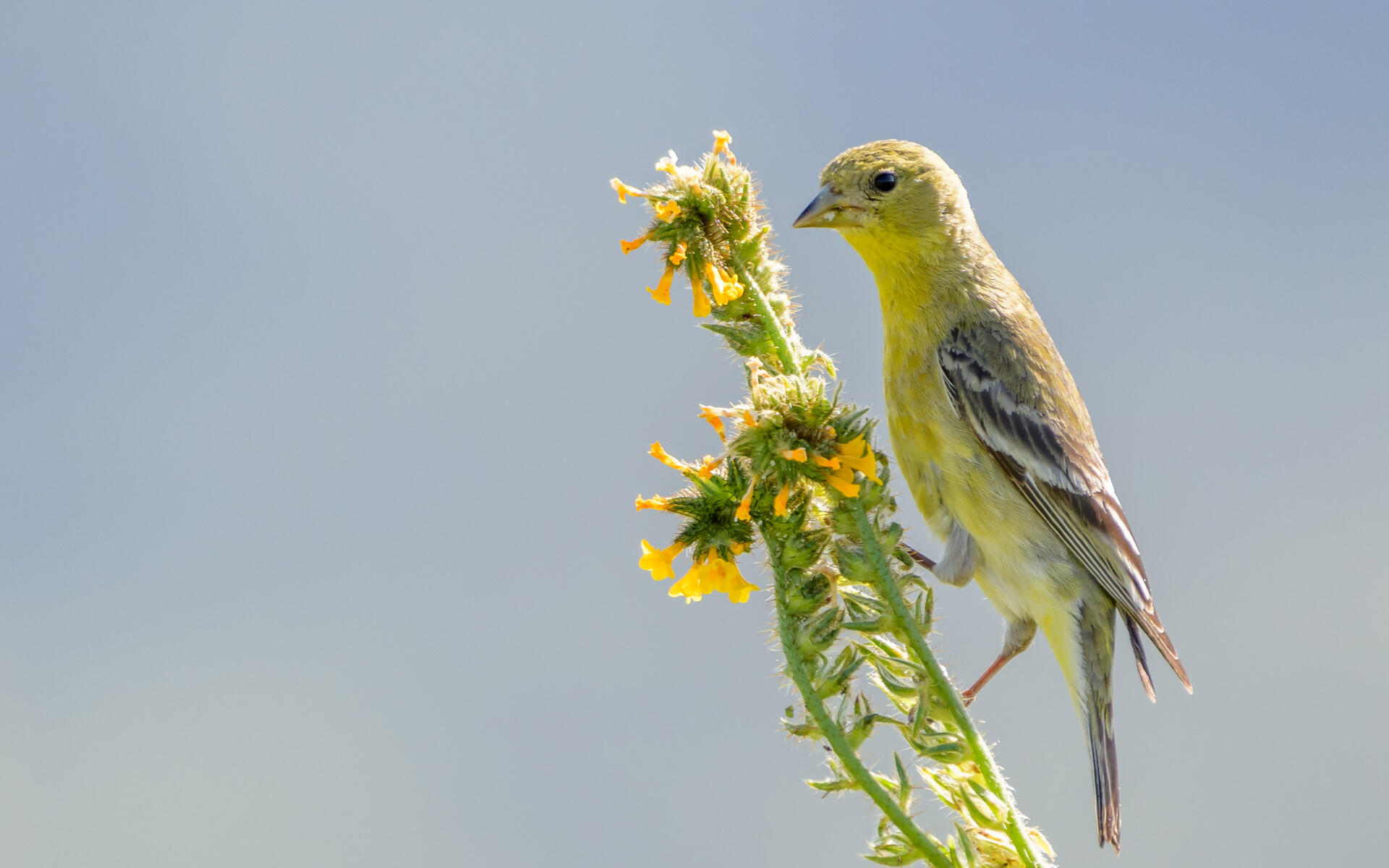
Recognition: Size & Shape: Smaller in size than American Goldfinch with lengths from 3.5 to 4.6 inches. They have a big round head with a short tail and neck. The body is lime in color with white marks on black wings and tail. Males have black caps extending to their foreheads.
Habitat: They can be seen in flocks in open scrubby areas, oak trees, grasslands, and woodlands.
Diet: They mostly prefer weed seeds, thistle seeds, and also insects.
Also, read – birds of Colorado
-
Gila Woodpecker
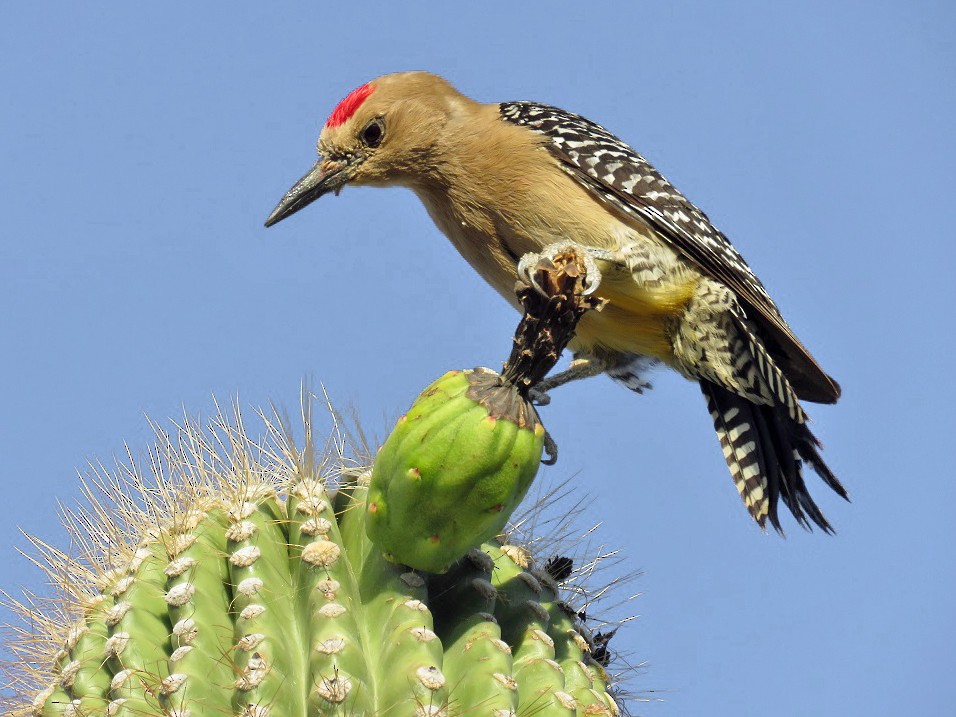
Recognition: Size & Shape: The species range from 8 to 10 inches in length from beak to tail tip. It has a long and pointed beak. Large head with a short tail. Brown body and wings with a black and white striped pattern. Males have a red spot on the crown area.
Habitat: Mostly in desert areas along with larger trees. They also excavate cavities to nest holes in the saguaro cactus.
Diet: Generally, insects are found by drilling into branches and trees. May also eat fruits, seeds, worms, and eggs.
-
Verdin
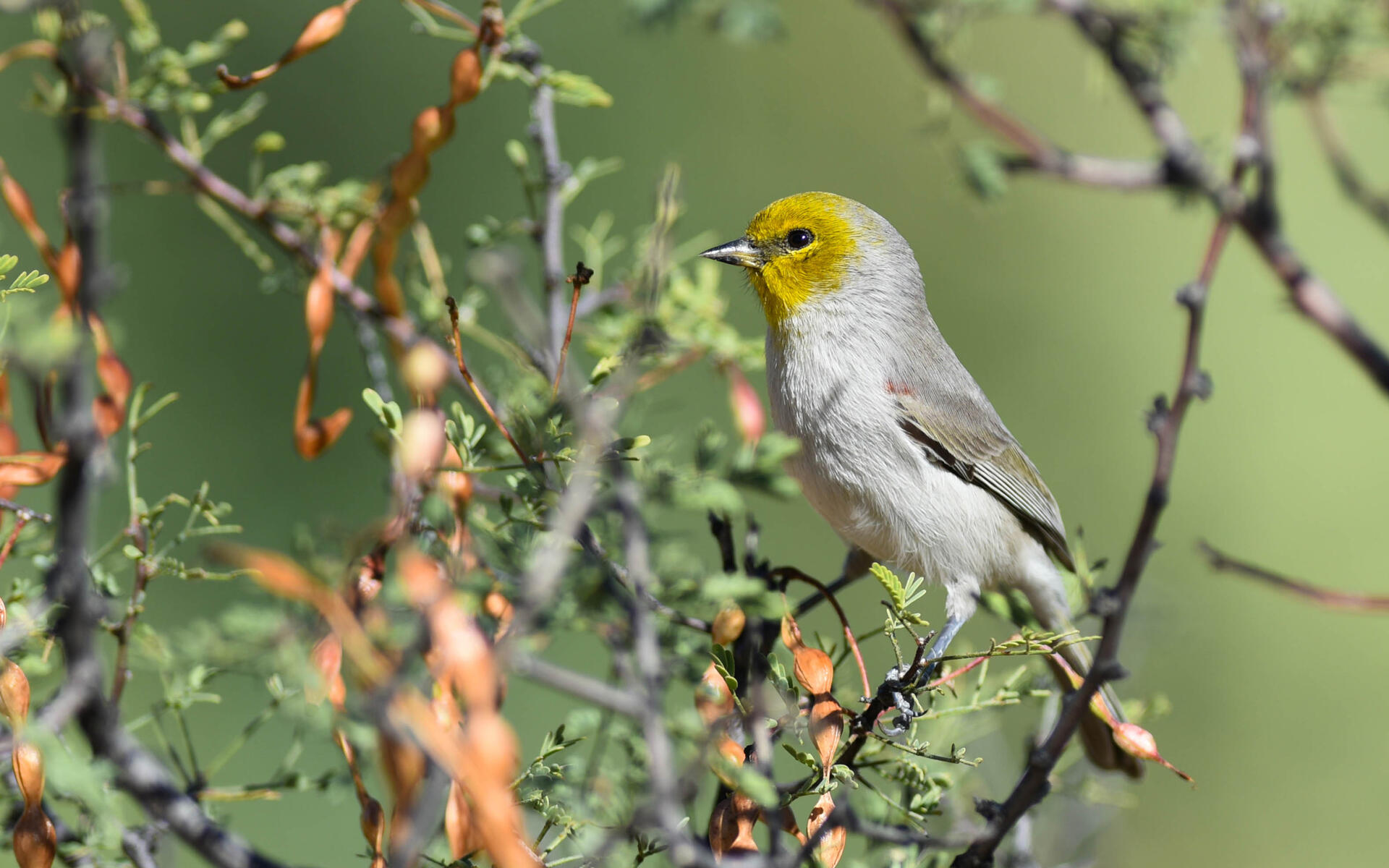
Recognition: Size & Shape: Very small in size, about 4.5 inches in length. Plump head with a medium-size tail and a short, thick bill. Their body is light grey in color with yellow face.
Habitat: Inhabit in thorny thickets and shrubs with fewer trees. Their nest consists of bulky twigs with feathers and grass.
Diet: Insectivores in nature, mostly eat tiny insects from the desert trees and shrubbery. They also try to get sugar water from hummingbird feeders.
-
Anna’s Hummingbird
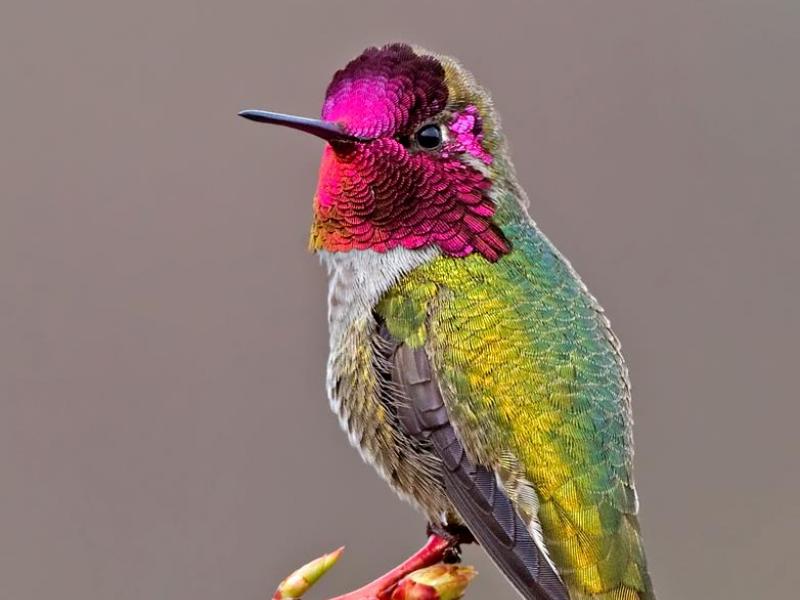
Recognition: Size & Shape: The species is 4 to 4.3 inches in length with a 4.7 inches wingspan. The beak is very long, thin, and slightly curved downwards. It has a greenish belly and chest with black wings. Males have iridescent pink-covered head and throats.
Habitat: Prefers open woods, shrubby areas, and suburban gardens. They nest early in December and late in June, depending on climatic conditions and location.
Diet: Generally, nectar from plants and tiny insects.
-
Great-tailed Grackle
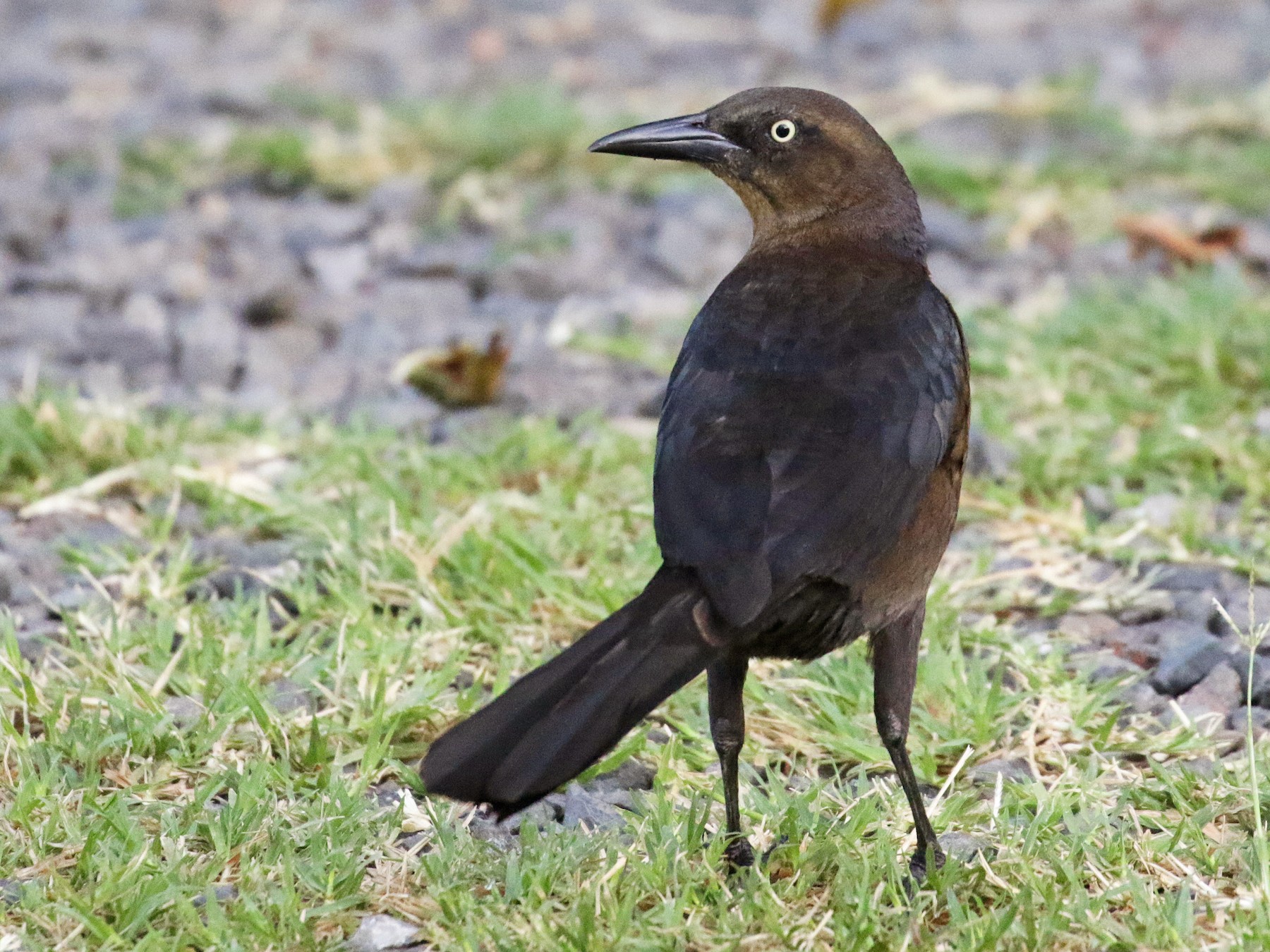
Recognition: Size & Shape: Huge in size ranging from 15 to 18 inches in length. Big tail with a long and pointed beak. Males are glossy blue and black, and females are brown in colour.
Habitat: On grounds and in clear areas like golf courses, agricultural areas, scrub, and wetlands. They are often seen in urban areas.
Diet: Being omnivorous, they forage insects and scraps of food. They also eat lizards, eggs, fruits like bananas, berries, and grains.
-
Gambel’s Quail
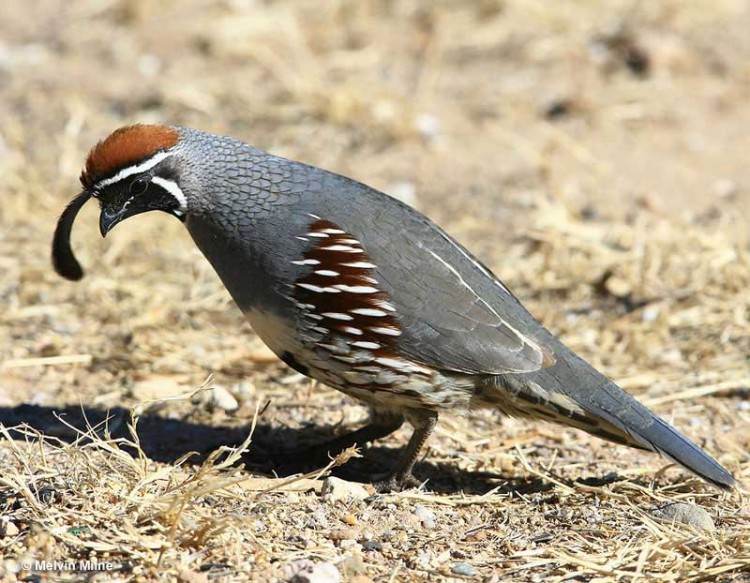
Recognition: Size & Shape: The species’ average length is nearly 11 inches. It has a short tail with a small bill. Their body is light grey, and cream a colored belly with a dark patch in the center. Males have a rusty brown crown with two feathers stooping over the forehead and a black face.
Habitat: Mostly seen in thorny desert scrubs. They forage on the ground in flocks for food.
Diet: They eat insects, as well as berries and mesquite trees. Also, eat cracked corn and milo bird seeds.
-
Yellow-rumped Warbler
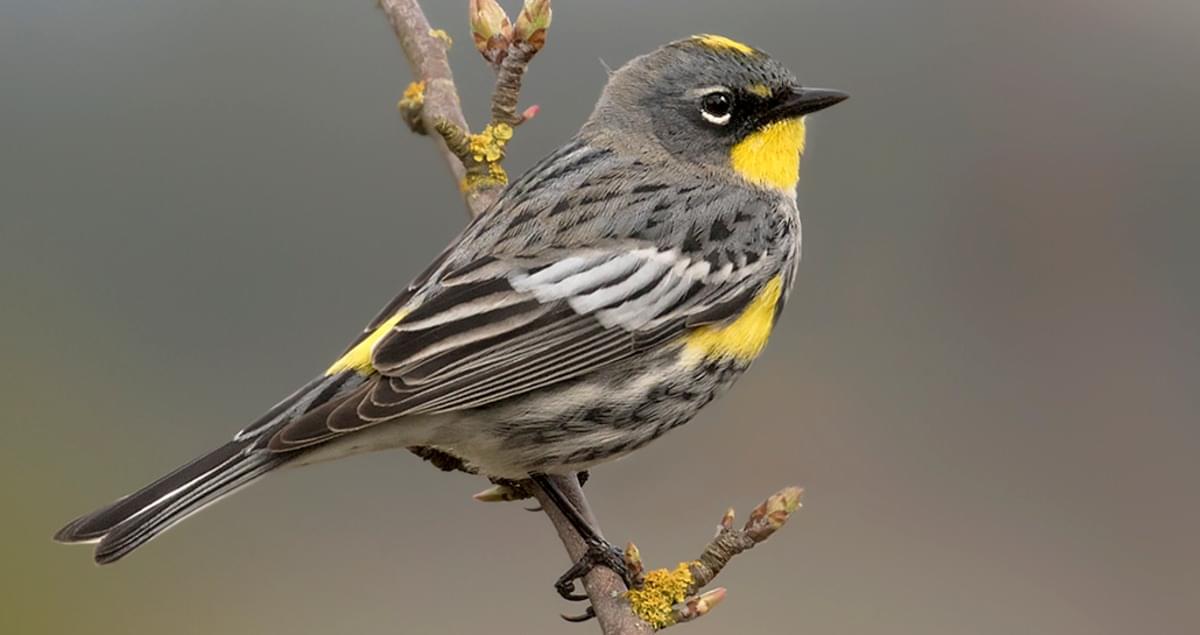
Recognition: Size & Shape: They can range from 4.7 to 6 inches from their bill to their tail tip. They are plump and have a very short tail. Their bill is short, thin, and almost neckless. The species can be seen in different forms, in the western form, they have a yellow spot on the throat. In northern and eastern forms, they have white spot throat on the throat and white bars on the wings. The species has a yellow rump, as the name itself suggests.
Habitat: They spend their breeding period in mixed, coniferous forests and in deciduous woodlands. Often seen in open areas, parks, and oak-pine forests in winter.
Diet: Commonly, they eat insects like caterpillars, ants, aphids, spiders, and larvae. They also eat raisins, sunflower seeds, and suet.
-
Curve-billed Thrasher
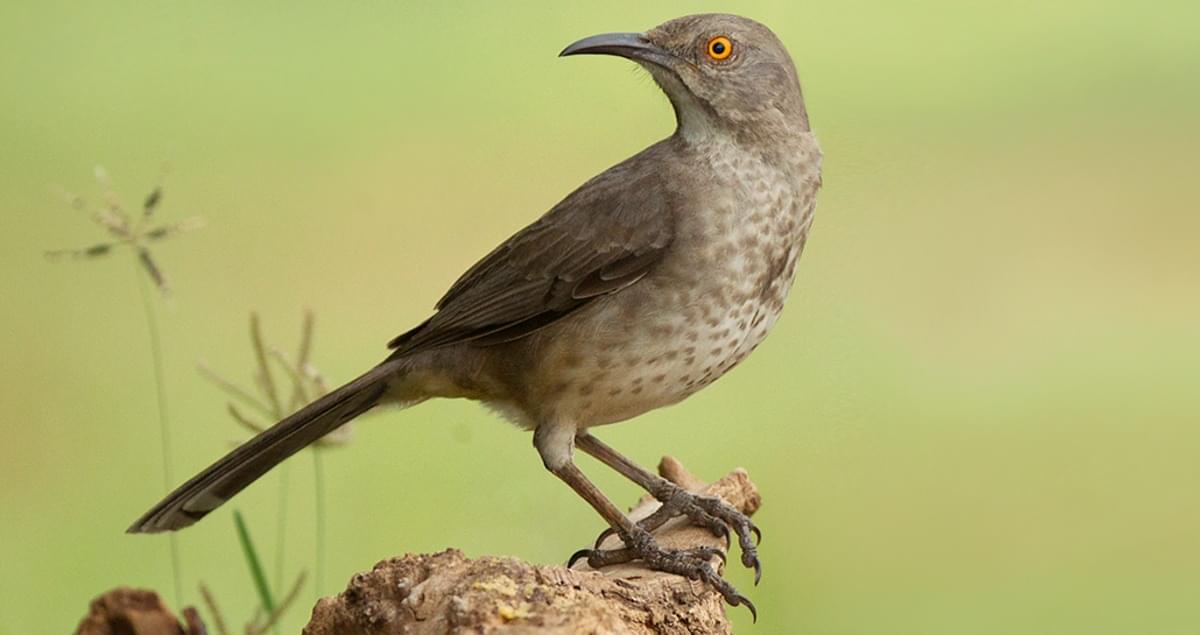
Recognition: Size & Shape: It is a medium-sized bird ranging from 10.5 to 11 inches in length. Has a long tail with a short neck. The bill is slender and long, shaped like a sickle. It is dusky brown in colour with pale underparts.
Habitat: Spread across the Sonoran Desert and the Chihuahuan Desert. They reside in dry deserts near bushes areas where cacti are present.
Diet: The species is an omnivore and eats invertebrates, moths, beetles, and snails. They also eat vegetable matter like fruits and cactus.
-
White-winged Dove
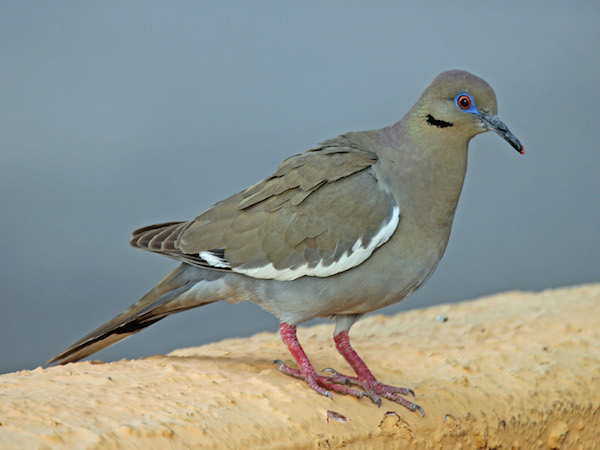
Recognition: Size & Shape: The species is a little bit larger than Mourning Dove. The beak is slender and medium size with a square-shaped tail. They are brown in colour and have white wing patches.
Habitat: The white-winged doves reside in saguaro cacti, desert thickets, and also in towns. They can be seen near lakes in the morning and afternoon in search of water.
Diet: Their diet consists of a variety of seeds, grains, and fruits like the saguaro cactus. They can be seen in large flocks in agricultural fields near grain crops. Often, they visit bird feeders and dropped grains on the ground.
-
White-crowned Sparrow
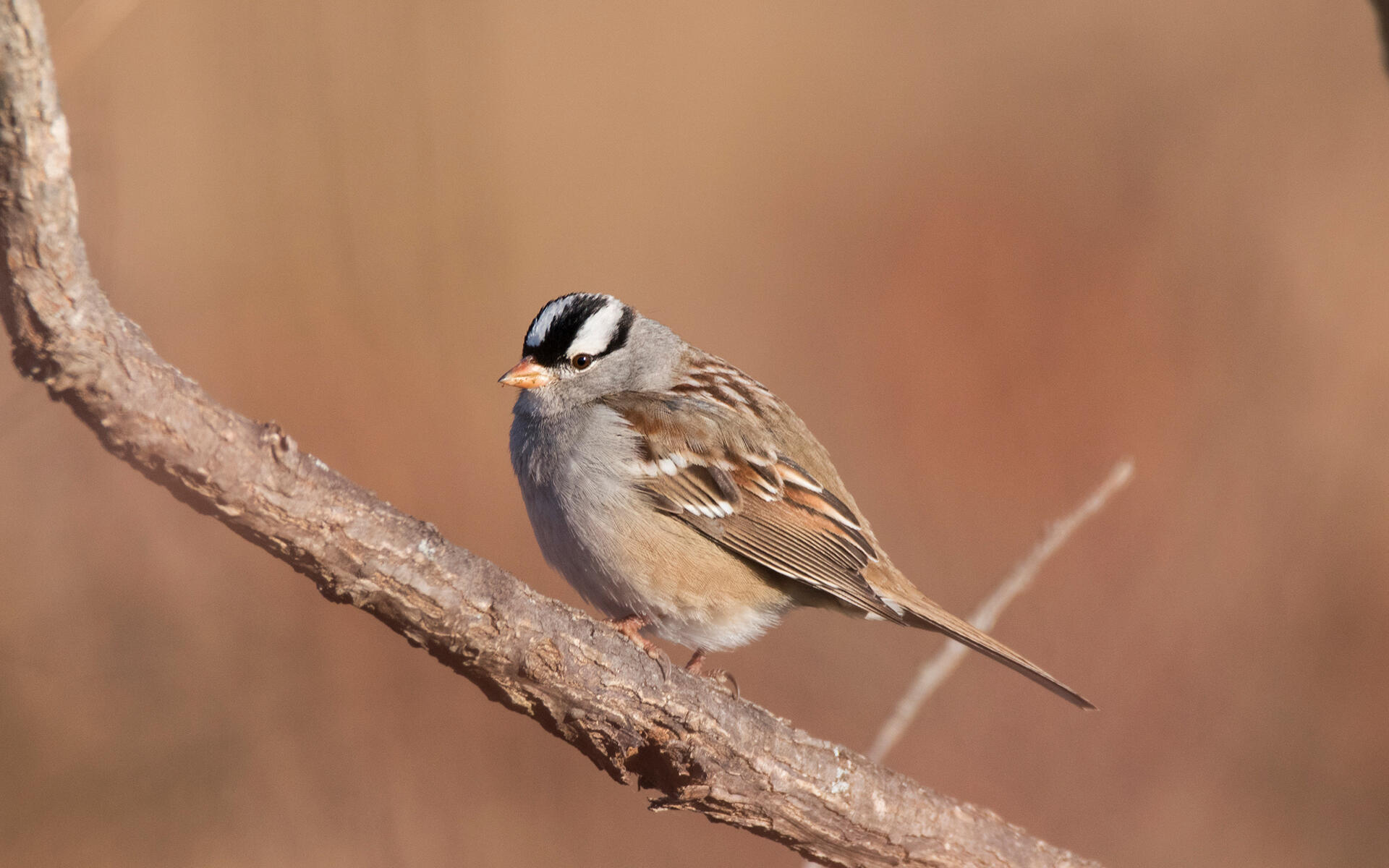
Recognition: Size & Shape: The species have a length of 6 to 7 inches from its bill to its tail. They have a round head and long tail. The beak is short and conical and yellow in colour. Their body and wings are brown with grey underparts. Adults have zebra-like black and white stripes on their crowns.
Habitat: They can be seen in low vegetation and open areas. Nest in shrubs and bushes near the ground.
Diet: Eats small insects, grains, weeds, and black oil sunflower seeds.
List of common birds of Arizona with videos
Given below is a list of common birds of Arizona with their videos. The videos consist of their calls, habitat, food they eat, and some other interesting facts.
House Finch
Mourning Dove
Verdin
Anna’s Hummingbird
White-crowned sparrow
Yellow-rumped Warbler
Gambel’s Quail
Great-tailed Grackle
Curve-billed Thrasher
White-winged Dove
List of most found birds in Arizona by season and frequency
The list consists of birds in Arizona according to different seasons and how frequently they are seen in those seasons.
Season: Winter (from December to February)
- Red-tailed Hawk-27%
- Common Raven-27%
- American Coot-26%
- Northern Flicker-18%
- Ladder-backed Woodpecker-18%
- Northern Mockingbird-17%
Season: Spring (from April to May)
- Turkey Vulture-31%
- Common Raven-27%
- Black-chinned Hummingbird-21%
- Lucy’s Warbler-18%
Season: Summer (from June to July)
- Turkey Vulture-29%
- Common Raven-24%
- Brown-headed Cowbird-19%
- Black-chinned Hummingbird-18%
- White-breasted Nuthatch-18%
- Northern Mockingbird-18%
Conclusion: The article consists of a list of birds in Arizona that you can see more often. It also gives brief information about their diet, behavior, and how to identify them. Their frequency, according to different seasons, is also stated.
You may also like: List of birds found in Virginia

Subscribe to Email Updates :





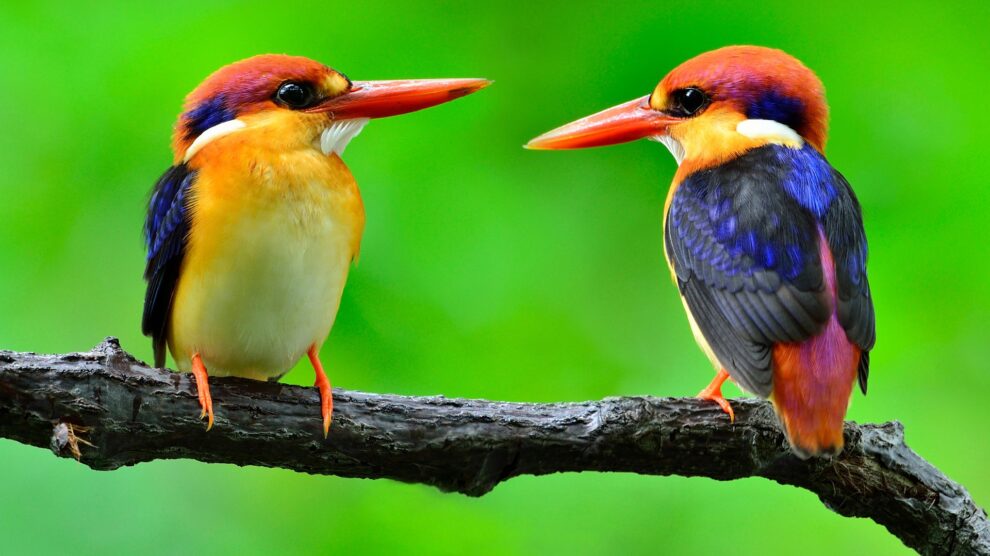



Add Comment